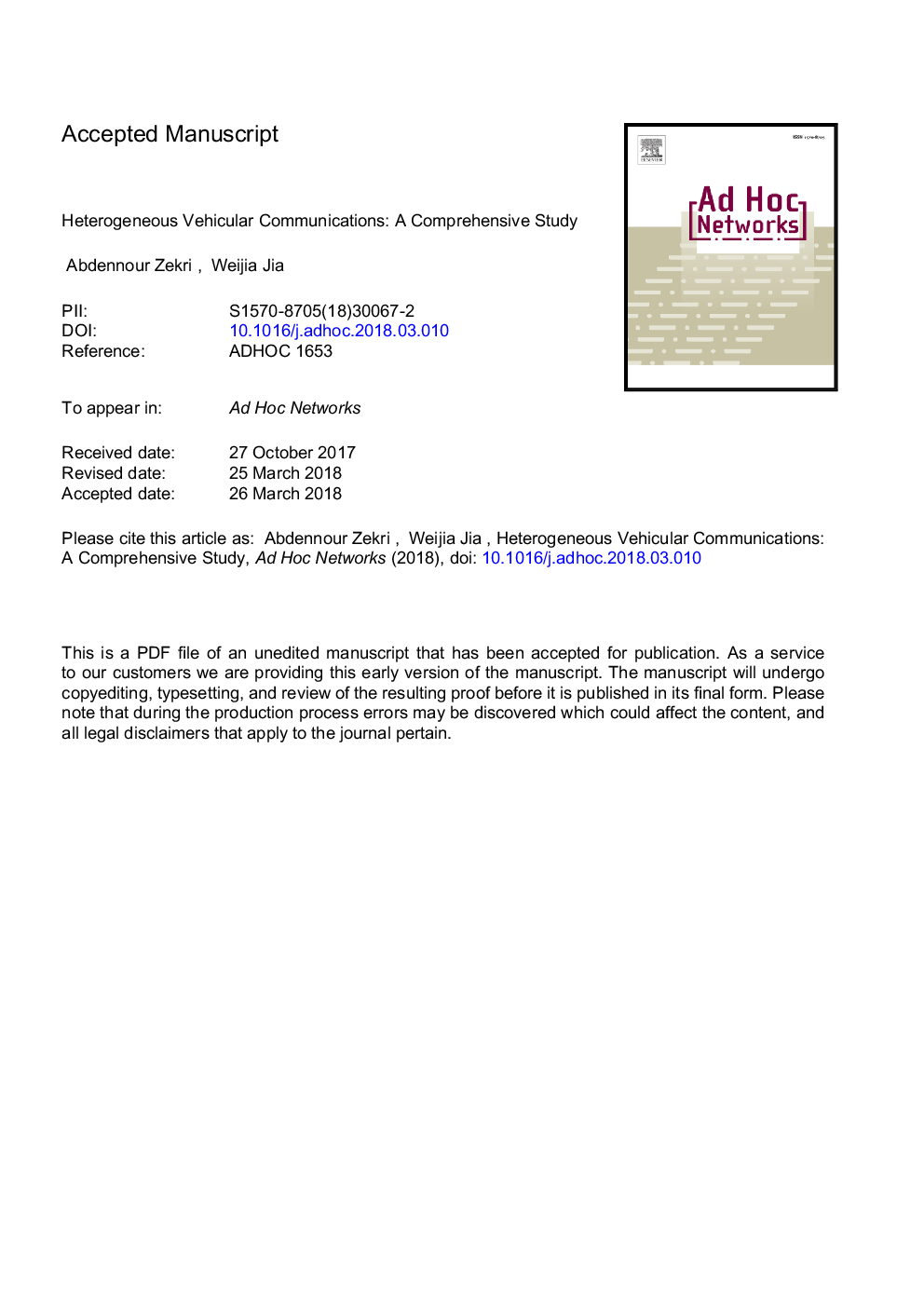| Article ID | Journal | Published Year | Pages | File Type |
|---|---|---|---|---|
| 6878487 | Ad Hoc Networks | 2018 | 29 Pages |
Abstract
Vehicular communications have developed rapidly contributing to the success of intelligent transportation systems. In VANET, continuous connectivity is a huge challenge caused by the extremely dynamic network topology and the highly variable number of mobile nodes. Moreover, message dissemination efficiency is a serious issue in traffic effectiveness and road safety. The heterogeneous vehicular network, which integrates cellular networks with DSRC, has been suggested and attracted significant attention recently. VANET-cellular integration offers many potential benefits, for instance, high data rates, low latency, and extended communication range. Due to the heterogeneous wireless access, a seamless handover decision is required to guarantee QoS of communications and to maintain continuous connectivity between the vehicles. On the other hand, VANET heterogeneous wireless networks integration will significantly help autonomous cars to be functional in reality. This paper surveys and reviews some related studies in the literature that deals with VANET heterogeneous wireless networks communications in term of vertical handover, data dissemination and collection, gateway selection and other issues. The comparison between different works is based on parameters like bandwidth, delay, throughput, and packet loss. Finally, we outline open issues that help to identify the future research directions of VANET in the heterogeneous environment.
Keywords
Related Topics
Physical Sciences and Engineering
Computer Science
Computer Networks and Communications
Authors
Zekri Abdennour, Jia Weijia,
